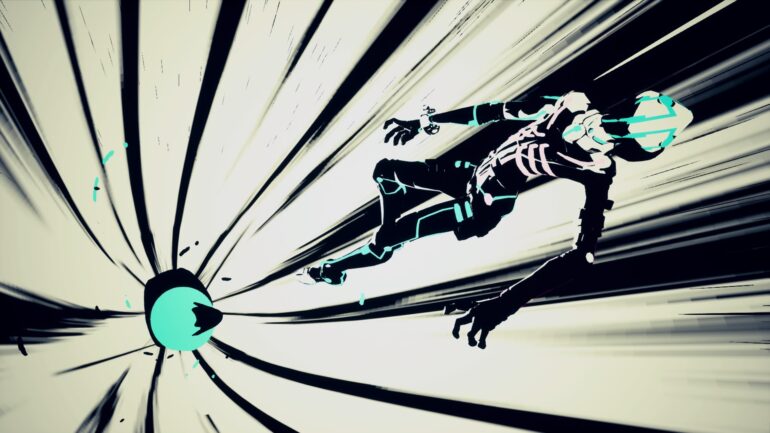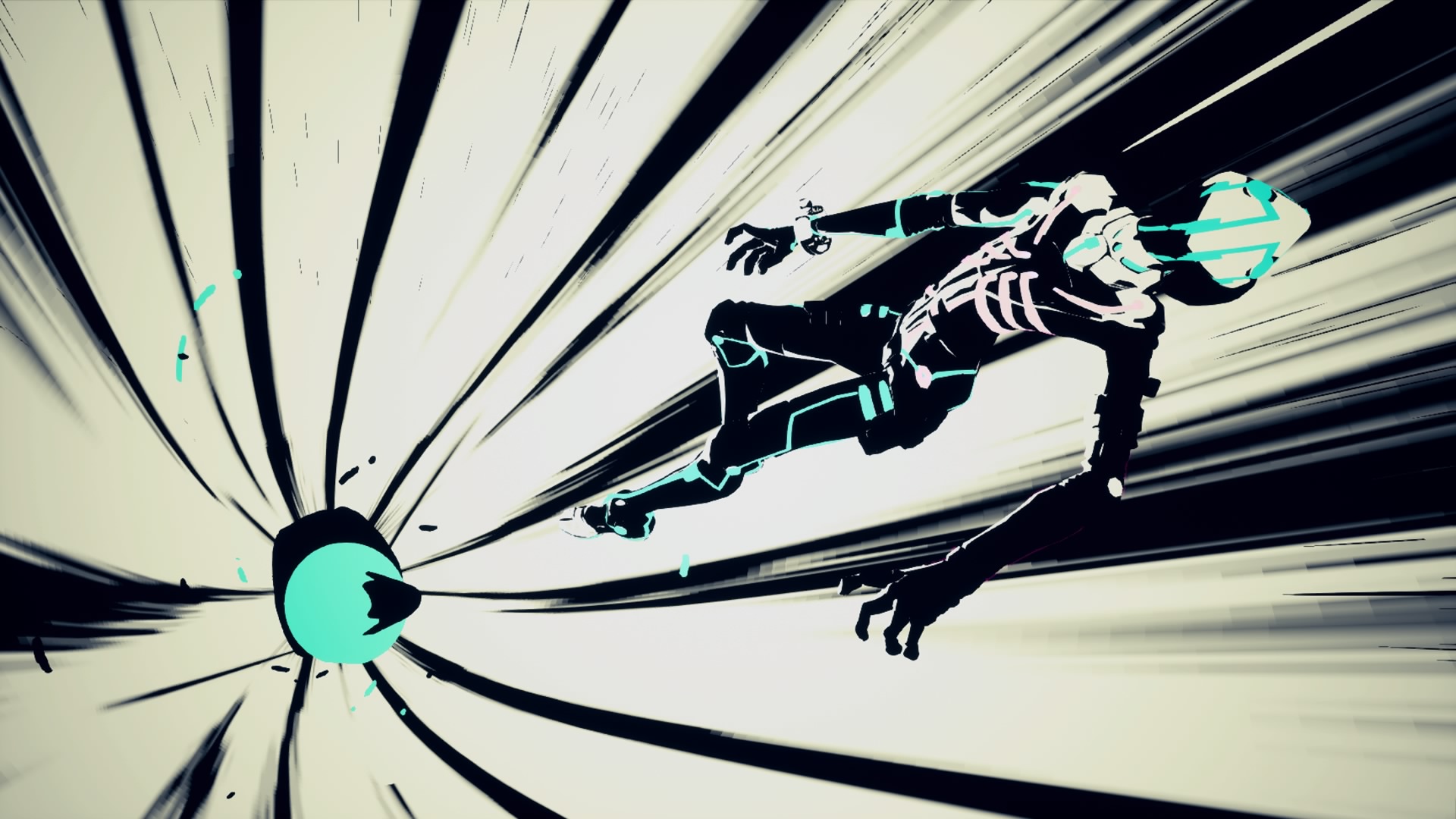Although I hate to compare games to other games outright in reviews, the influence of Shadow of the Colossus and Journey is impossible to ignore in Heart Machine’s sophomore effort. Solar Ash does not reach the heights of either. Still, it does mash the two concepts together to produce an entertaining if shallower result, sprinkled with Heart Machine’s gorgeous neon pink and purple stylistic flourishes.
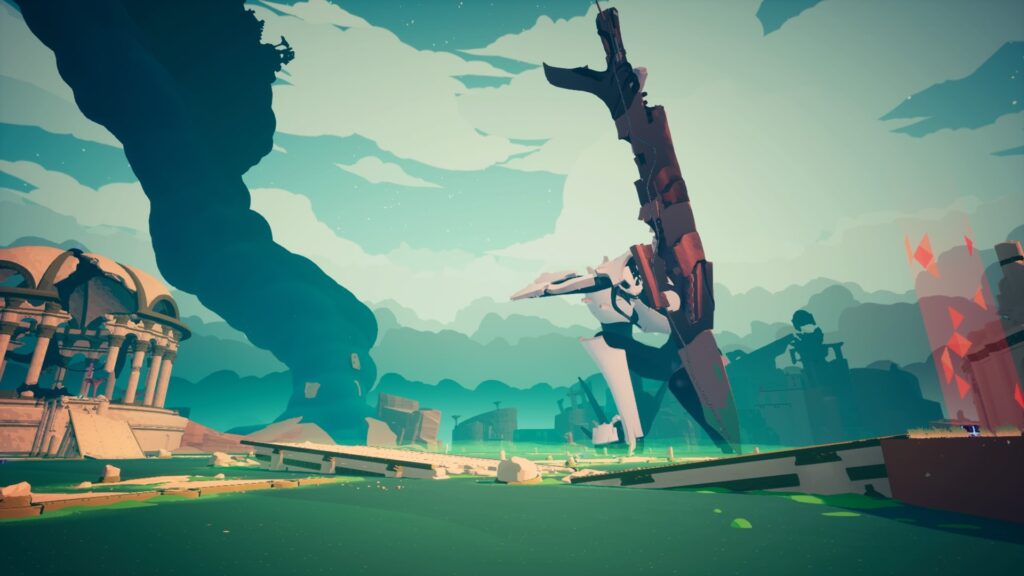
“Playing as one of the void runners, Rei, you wake to find yourself crash-landed near the Starseed.”
It begins with humanity, or rather, a human analog, on the familiar brink of destruction. This time a massive black hole, known as the Ultravoid, is about to consume the whole planet. After inaction from planetary governments, the mystical void runners try a daring rescue plan by utilizing a tool known as the Starseed, located in a previously consumed world, they try to rid themselves of the Ultravoid threat.
Playing as one of the void runners, Rei, you wake to find yourself crash-landed near the Starseed. Your companions are missing and unresponsive. For the rest of the game, you must awaken and destroy massive legendary beasts, discover what happened to your companions, and start up the Starseed.
The game is divided into five areas. In each, a boss reveals itself after you destroy all of its eyes scattered across each map. NPCs are hidden in these levels with story-driven side quests to solve, as well as audio logs and pieces of suits from the other void runners. Find all of the caches, and you get a suit with a bonus effect. But outside of a few, these effects were never very noticeable or exciting.
The joy of the Solar Ash, very similar to another spacefaring game this year, is in its movement and platforming. And unlike that other game, there is a lot more to discover and take in, with a much more refined movement system.
“Solar Ash focuses on the perfection of constant movement”
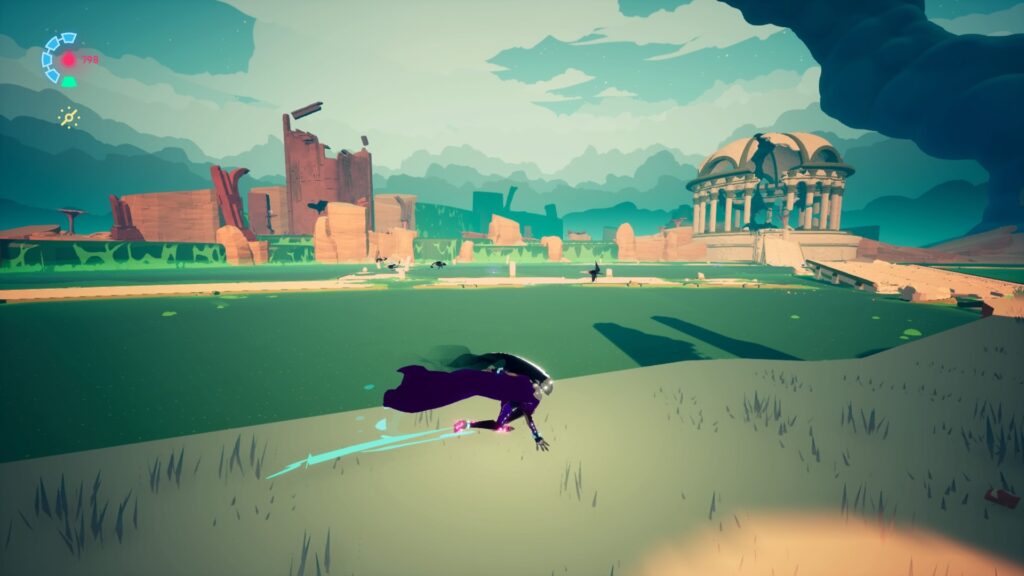
Solar Ash focuses on the perfection of constant movement like in the flow state of sliding up and down the dunes of Journey, taking into account the same minimalist control scheme. Instead of just walking, you skate along the environment and up and down conveniently placed rails. You also have double jumps and boosts of momentum.
It’s simple and immediately understandable, with attacks only mapped to one button, and grapple and time slow abilities adding to your choices in combat and platforming. Fortunately, I rarely fought with the controls or got stuck on objects.
This simple toolset mixed with unique enemies leads to interesting levels as new platforming challenges are introduced. Spider-like enemies that shoot beams force you to weave in between cover while you avoid charging beasts. They even open up opportunities for non-intended methods of taking out eyes, like grappling a flying enemy to reach a higher platform.
“While some areas in Solar Ash felt unique, others blended into each other.”
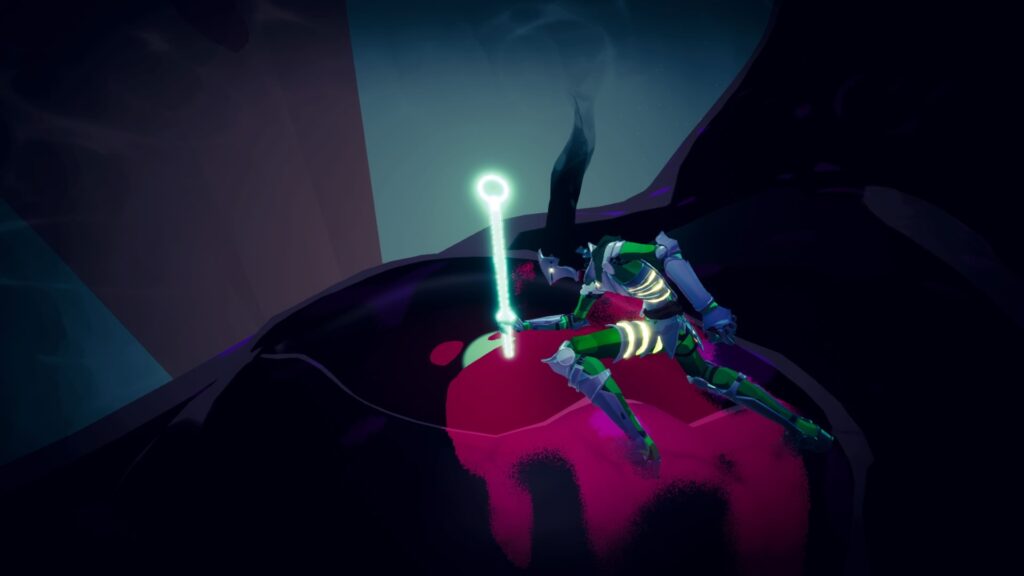
An equally wonderful environment aids this movement and combat system. The world of this desolated planet is broken apart, stuck together by puffs of nebulous clouds or precarious rails with only bits and pieces of people that once inhabited it. But these remains make quite a sight with ancient temples and skyscrapers, homes and caves, and natural landscapes, all jumbled together on these physics-defying clouds of stuff.
While some areas in Solar Ash felt unique and had a character in themselves, others blended into each other. The second area was a memorable downtown center, with skyscrapers, apartments with artifacts, subways, and public transportation. It felt like it was a place that could be used and that was inhabited, but this was the exception. Furthermore, Solar Ash has a score with spacy epic synths that only made fights and vistas all the more powerful. But all the same, it also quickly got repetitive too.
“The movement felt great, but everything around it was Reptitive”
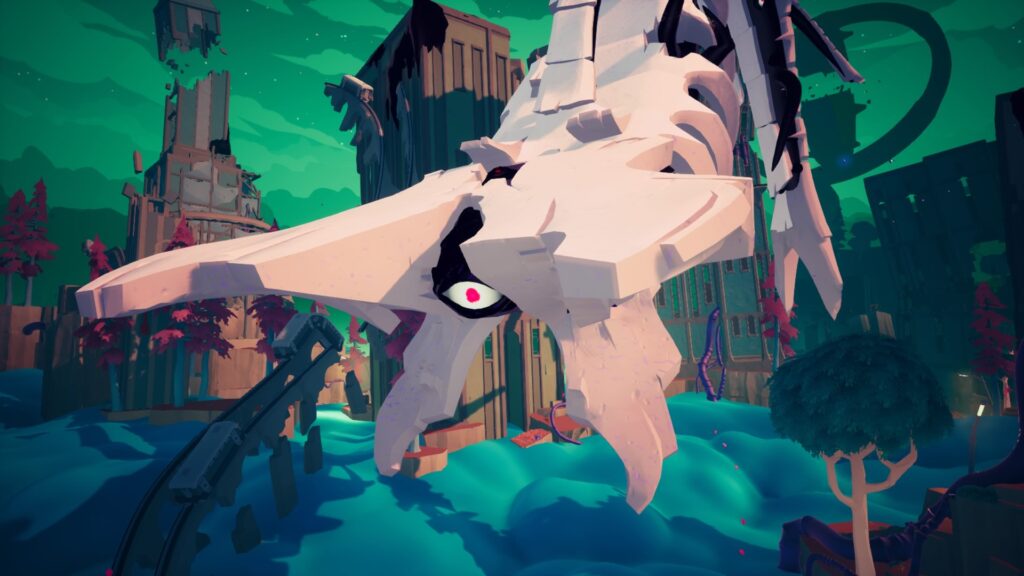
Most of the areas were vague and unclear even though they were beautiful. I felt no connection, and they just slid away, simply becoming tools for platforming. Outside of one or two, they were too similar to be fantastical. And they were not thought out enough to be considered real places, or at least the remnants of real places.
The movement felt great, but everything around it was just repeating the same thing over and over again. Locating the eyes, taking them out, and finding secrets felt like checking off items on a list. Even the new platforming challenges felt like doing the same thing over and over again without innovation past an initial idea. It started to drag out the pacing of an already short 7-hour game.
This copy-paste level design was never more noticeable or frustrating than in bosses. Though visually striking, they looked very similar and played the same too. Grapple onto a fixed point, and slash and grapple way to the central eye and repeat three times on all six or so bosses. Gone are the unique and varied bosses and patterns of Hyper Light Drifter, in with finicky quick-time event set-piece bosses.
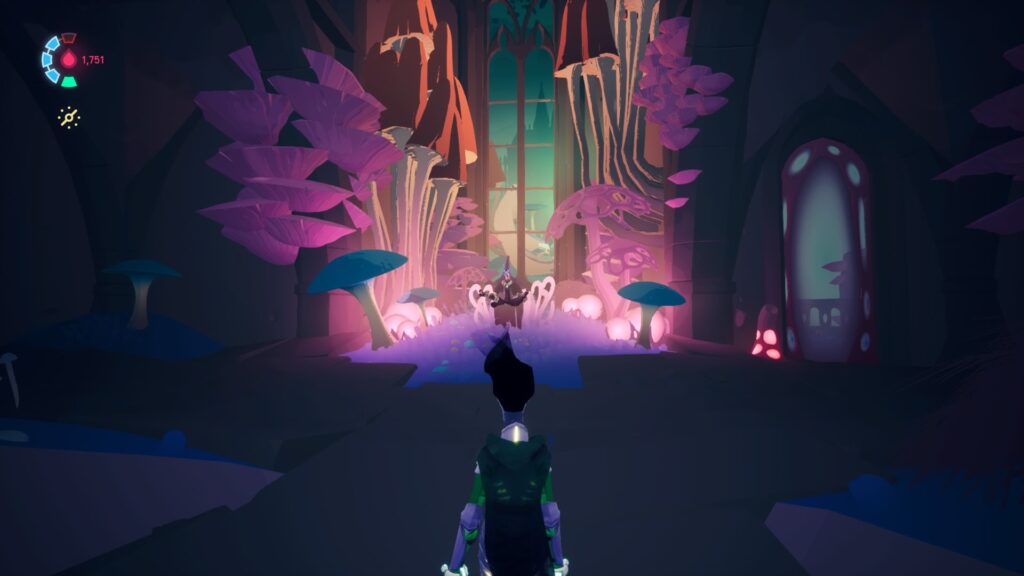
“Although it finished strong, the narrative and characters felt uninspired”
Don’t get me wrong, they could be fun, but they lost me after I repeated the same steps for every single boss. Only their scale and Solar Ashes’ excellent movement system kept me engaged in these fights. It doesn’t follow the footsteps of its influences. Instead of the intricate puzzle-platforming of colossus fights from Team Ico’s classic, the bosses in Solar Ash stop at just the imitation of the creature’s epic size.
This same shallow recreation can also be applied to the generic apocalyptic narrative. Although it finished strong, the narrative and characters felt uninspired despite some spirited voice acting. It was cartoonish. They felt too familiar without any sense of otherness. Even the world-building and environments never did much to make me care about what was going on. Arguably, Hyper Light Drifter said way more and inspired mystery, by explicitly saying way less, narratively, and atmospherically.
“It might not stick with you, but it’s still a great sugar-coated burst of Heart Machine aesthetics and smooth movement-based design.”

Nonetheless, it’s still a fun and entertaining time. It’s no masterpiece but feels great on the moment-to-moment level, and it boasts a decent challenge but with very forgiving checkpoints. Some fans of Hyper Light Drifter might be disappointed that it isn’t a hardcore experience. But Heart Machine’s built-in accessibility is wonderful to see.
Exploring the worlds, even if they are a little vapid in terms of environmental storytelling, is still immensely freeing. There are plenty of secrets to find and quests to complete. But the journey to get there was always the best part. While it will not top game of the year lists, Solar Ash is still a worthy purchase even at full price. It might not stick with you, but it’s still a great sugar-coated burst of Heart Machine aesthetics and smooth movement-based design.
*Disclaimer: Reviewed on PC, code was provided by the Publisher.






